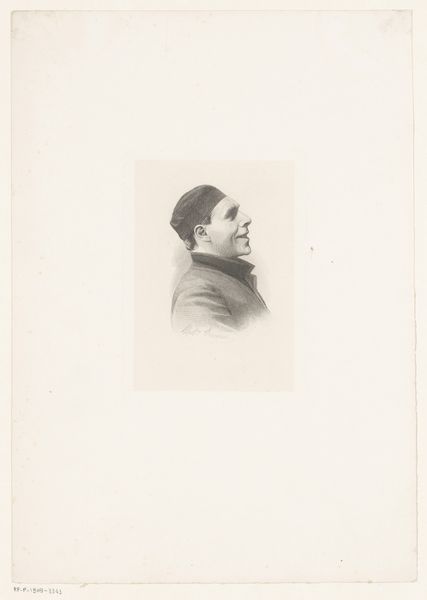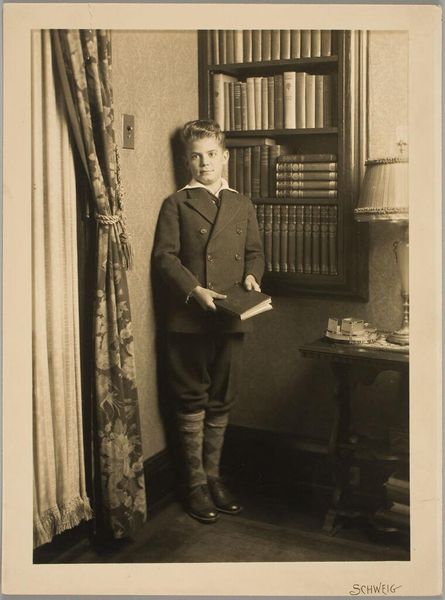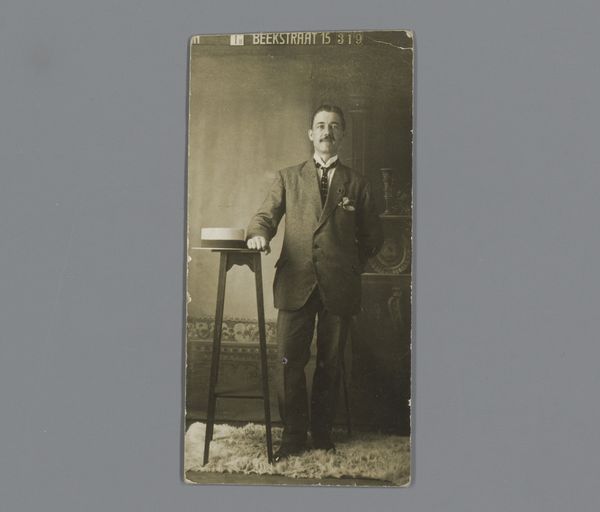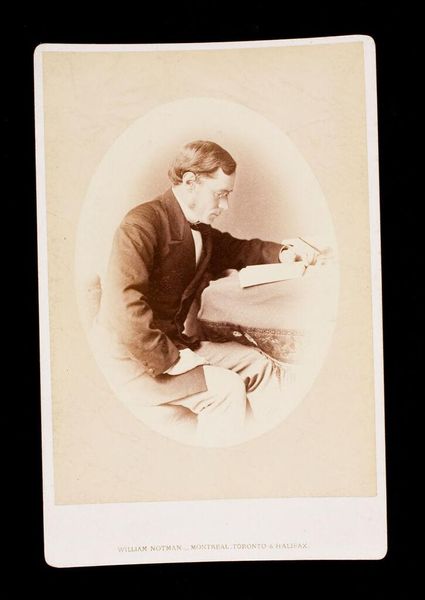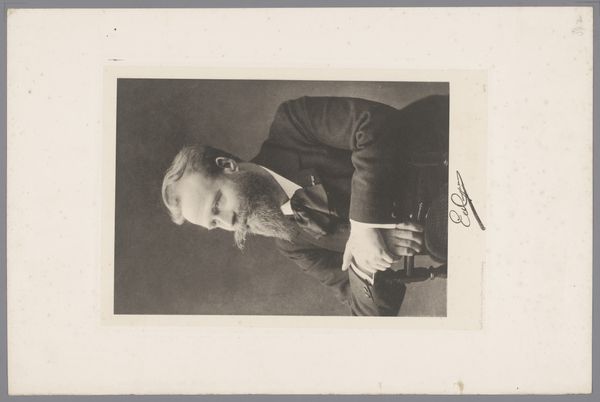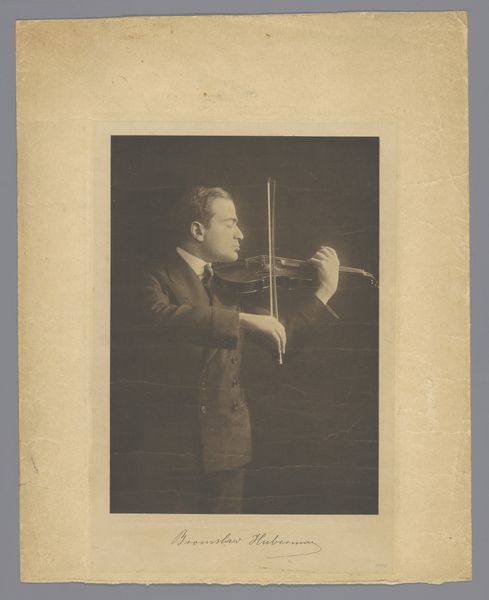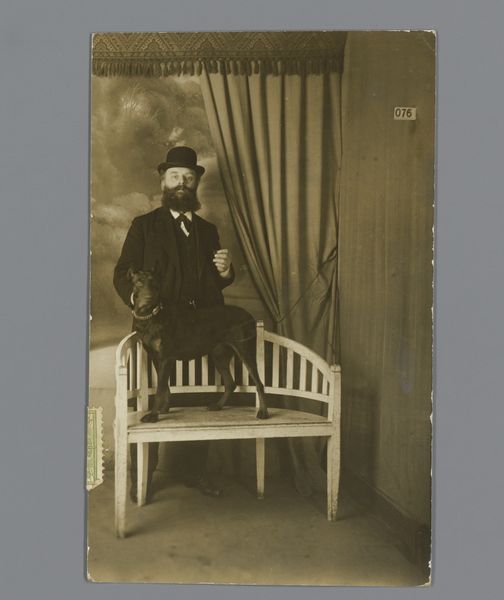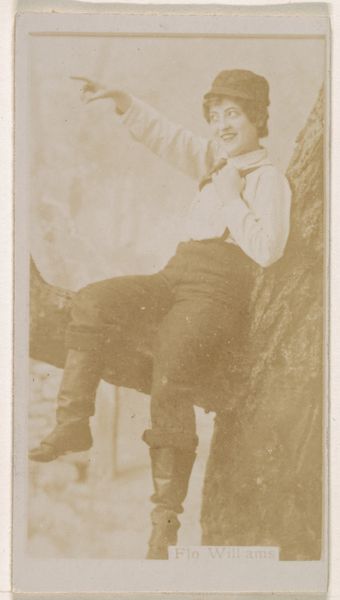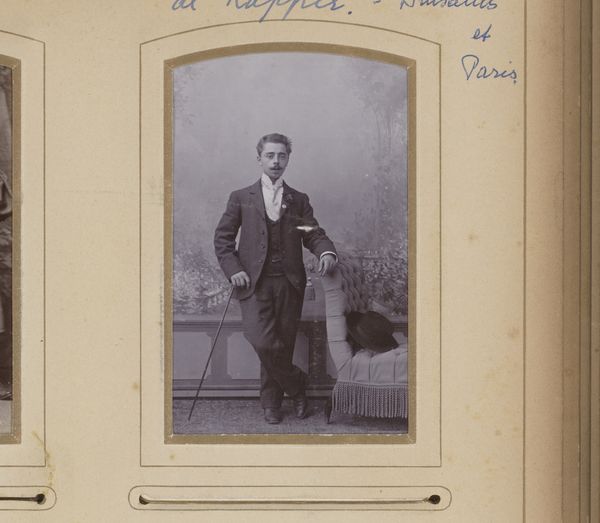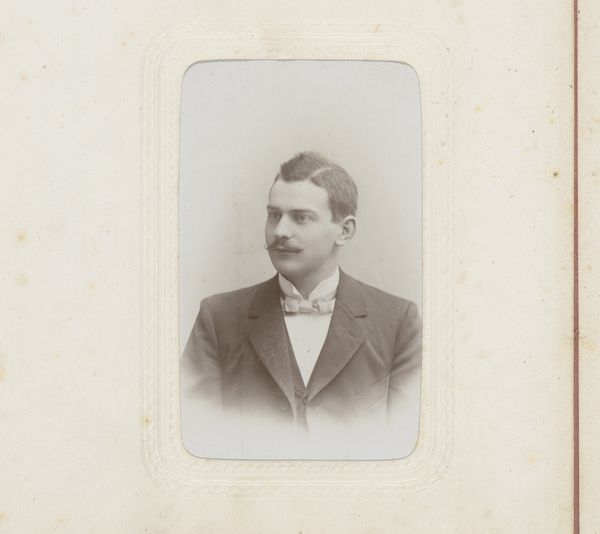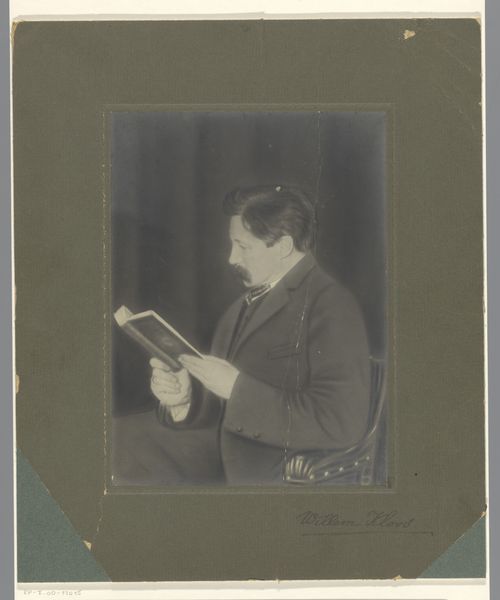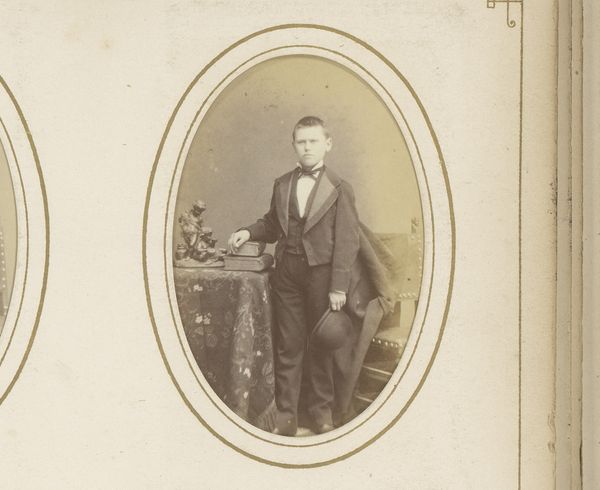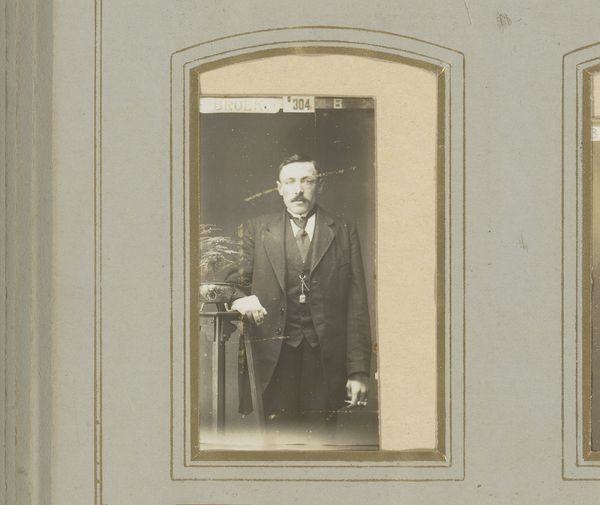
photography, gelatin-silver-print
#
portrait
#
print photography
#
pictorialism
#
archive photography
#
photography
#
historical photography
#
gelatin-silver-print
Dimensions: height 175 mm, width 130 mm
Copyright: Rijks Museum: Open Domain
Editor: Here we have Augusta Curiel's "Portret van Aleidus Coenen, componist," possibly created between 1907 and 1925, a gelatin-silver print photograph. The composer strikes a rather nonchalant pose beside his piano. How do you interpret this work, particularly given Curiel's identity as a female photographer in Paramaribo? Curator: It’s essential to situate Curiel’s work within the historical context of colonial Suriname. As a woman photographer of Afro-Surinamese descent, her gaze carries a specific weight. The very act of documenting Coenen, a composer likely belonging to the European-descended elite, becomes a powerful assertion of her own agency and a subtle commentary on class and representation. Editor: I hadn't thought about it that way. It felt like a fairly straightforward portrait at first glance, but you are right: Curiel's positioning within that society adds a layer of complexity. Is the stylistic choice of pictorialism relevant here as well? Curator: Absolutely. Pictorialism, with its emphasis on artistic effect, allowed photographers like Curiel to elevate their work beyond mere documentation. By employing soft focus and evocative lighting, she's not just capturing an image; she's crafting a narrative. The presence of the bust in the background further elevates Coenen to almost iconic status, fitting in with existing visual culture. Consider, also, who was missing from the visual culture and how Curiel attempted to reconcile and revise that imbalance through her own portraits. Who gets remembered, and by whom? Editor: So, the portrait becomes an act of both recording and re-writing social hierarchies, a very conscious choice of how to visualize power and creativity? Curator: Precisely. It prompts us to consider how photography, especially in a colonial context, becomes a tool for shaping perceptions and challenging existing power dynamics. Curiel's work acts as a critical intervention within that historical landscape, a point of departure. Editor: I see this work in a new light now! Thank you for highlighting Curiel’s powerful stance as an artist navigating social inequalities through portraiture. Curator: My pleasure. Keep questioning, and keep connecting art to the world around it.
Comments
No comments
Be the first to comment and join the conversation on the ultimate creative platform.
